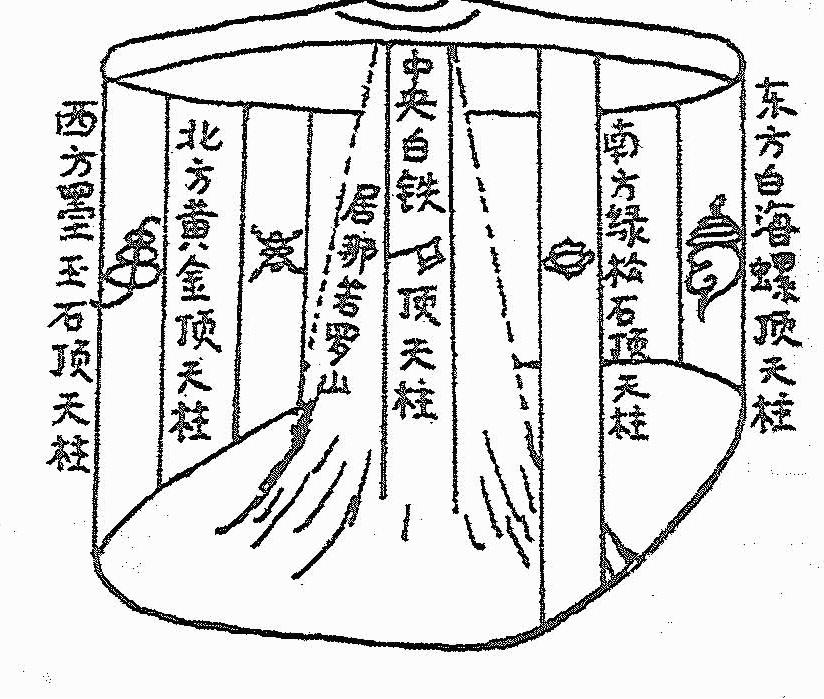The Naxi, descendants of hill tribes, believed the world to be flat.
The ancient Naxi believed the world to look something like this:
Naxi legend has it that after the nine brothers and seven sister, who were Gods, created the heavens and the earth, they erected five celestial pillars to keep the heavens from falling in. These five celestial towers, commonly perceived to be mountains propping up the sky, represent the four cardinal directions, as well as the central point, and are each associated with a certain element important to Naxi culture.
The five pillars each have a particular Naxi character associated with them – the valuable element that they represent.
ŋi33 mei33 t’ɣ33 p’ər21 to55 ʐər21ʦ’ɪ55
celestial tower of the white conch, standing in the east
ji55 tʂi33 mɯ21 o21 hər21 to55 ʐər21 ʦ’ɪ55
celelstial tower of turqoise, standing in the south
3) 
ŋi33 mei33 gɣ21 tʂ’u21 na55 to55 ʐər21ʦ’ɪ55
celestial tower of black jade, standing in the west
ho33 gɣ33 lo21 hæ33 ʂɪ21 to55 ʐər21ʦ’ɪ55
celestial tower of gold, standing in the north
mɯ33 nei21 dy21 ly55 gɣ33 ʂu33 p’ər21 to55 ʐər21ʦ’ɪ55
celestial tower of white iron, standing between heaven and earth. This tower is also known as Mount Jjuna-shuala
All these celestial pillars (or mountains) play important roles in the various legends and stories of Naxi culture, themselves incorporated into Donga religious rituals.





